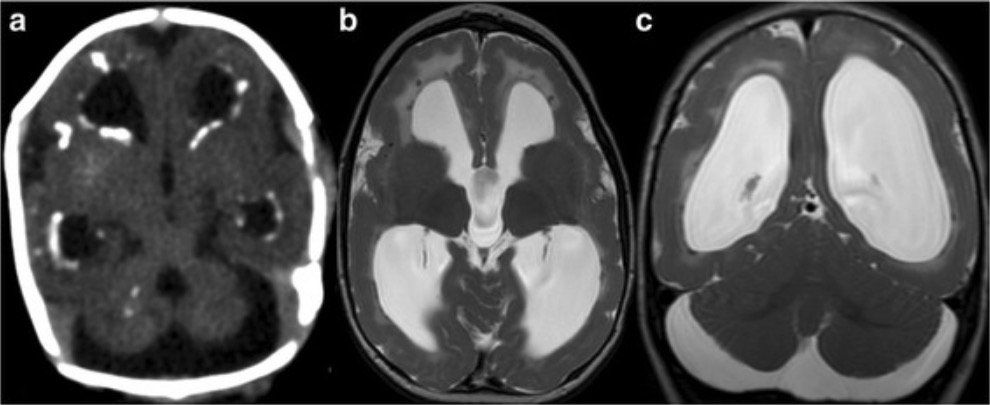Playlist
Show Playlist
Hide Playlist
Cytomegalovirus (CMV) – Herpesviruses
-
Slides Herpesviridae.pdf
-
Download Lecture Overview
00:01 Okay. Herpes virus number 5, cytomegalovirus, CMV. 00:06 This could be transmitted, again, in very similar ways to Epstein-Barr virus, meaning that it can be transferred congenitally, via transfusion, also via solid organ transplant, sexual contact, through saliva, through urine, here's our transplant. 00:23 So, again, a very commonly expressed virus at mucosal surfaces both within and without solid organs. 00:31 And we can see an infected epithelial cell on the image right in front of you. 00:37 The pathogenesis, CMV causes its initial infection by binding to oral epithelial cells and doing its replication. 00:46 Those cells, as they are undergoing replication within the cytoplasm, can look pathologically, as you see on the image on the right, they have an owl's eye, sort of, inclusion bodies where we're getting that cytomegalic replication going. 01:05 And to help us out, we have a green arrow pointing at one of the inclusion bodies. 01:10 After we get an initial, and typically mild symptoms or acute inflammation from the primary infection, the cells become latent within many of the white blood cells within tissues. 01:25 So, latency occurs in monocytes or macrophages and also, lymphocytes. 01:30 Then, and pretty much only then, if immunosuppression occurs, whether it's through a medication, some other infection, HIV infection, etc., then reactivation can occur. 01:43 So, let's again do, sort of, a head-to-head comparison of the most common infections caused by cytomegalovirus, and we'll start with infectious mono. So just like Epstein-Barr virus, CMV also can cause mono, usually acquired sexually or via kissing, sometimes via transfusion. 02:02 The thing about mono caused by CMV is it is much more mild than it is with Epstein-Barr virus. 02:09 So, A, the patients may, again, be completely asymptomatic, or B, if they have anything, they may have mild fatigue, or mild fever, perhaps mild splenomegaly. 02:20 It's just not a very big deal, thankfully, for mono caused by CMV. 02:27 Importantly and to distinguish in the early stages of diagnosis between EBV and CMV caused mononucleosis is that heterophile antibodies are negative in CMV mono, thus the monospot test will be negative. 02:44 Looking now at congenital CMV, this is probably the biggest deal other than transplant or opportunistic infections, as we'll talk about shortly. 02:53 Congenital CMV, babies born to mothers who develop active, or that primary, that first CMV infection during their pregnancy can be quite symptomatic. 03:04 And how symptomatic they are depends on when in the pregnancy mother was infected. 03:09 Infection in the first trimester may well result in a still birth. 03:13 Infection in the second and third semesters or trimesters, sorry, may develop slightly different changes in clinical appearance. 03:23 But a baby with full-fledged congenital CMV will demonstrate potentially a rash. 03:29 The rash may be flat, erythematous macules, or it may actually be sites of extramedullary hematopoiesis, which are sometimes called Blueberry Muffin Spots because they've come out anemic. 03:42 And because they're anemic, they are trying to create red blood cells in every site possible. 03:48 Very prominently, and this is probably a Board-style question, babies with congenital CMV have periventricular calcifications on their head CAT scans. 03:59 And you can see a picture of such one in the lower, middle part of the screen here. 04:04 We see very prominent and swollen ventricles. 04:08 This baby has hydrocephalus as well, but if you look around the anterior horns, that's toward the top of that CAT scan, you can see some surrounding, sort of blush. 04:19 That would be periventricular calcifications. 04:23 Babies also may have sensory neural deafness. In fact, congenital CMV is the principal cause of deafness in pediatrics. 04:31 They may definitely have microcephaly, cognitive delay, chorioretinitis, the whole 9 yards. 04:37 Now looking at opportunistic infections. 04:40 These are most often seen with patients who have HIV extending to AIDS, and also transplant patients. And these may present as anything. 04:50 Within the eye is probably most prominent, patients with an opportunistic CMV infection will likely have chorioretinitis, and you can see on the image of the retina on the screen, on the right side, that there are cotton wool exudates, so sort of fluffy, white spots. 05:06 That is a patient who clearly would have vision loss because the retina is very inflamed. 05:12 But, it's not just the eye, unfortunately, it could be any other part of the body. 05:17 So, one could have a pneumonititis, or pneumonia, and esophagitis or anywhere throughout the entire colon, one can get reactivation of CMV-inflamed, basically, lymph nodes, which can cause, like, problems with eating, problems with food passage, problems with absorption, anything. 05:36 Pancreatitis, hepatitis, encephalitis, name the organ, add "itis" after it, and that's what CMV can do.
About the Lecture
The lecture Cytomegalovirus (CMV) – Herpesviruses by Sean Elliott, MD is from the course Viruses.
Included Quiz Questions
Which of the following characteristic histopathological findings can be appreciated in the nuclei of the cells infected by cytomegalovirus?
- Owl's eye inclusion bodies
- Cowdry type A inclusion bodies
- Cowdry type B inclusion bodies
- Negri inclusion bodies
- Bollinger inclusion bodies
In a patient presenting with infectious mononucleosis, infection by cytomegalovirus must be differentiated from which of the following pathogenic viruses?
- Epstein-Barr virus
- Human herpesvirus 6
- Herpes simplex virus 1
- Varicella-zoster virus
- Human herpesvirus 8
Congenital cytomegalovirus infection is regarded as the most common non-genetic etiology of loss of...?
- ...hearing.
- ...vision.
- ...taste.
- ...smell.
- ... proprioception.
Customer reviews
5,0 of 5 stars
| 5 Stars |
|
5 |
| 4 Stars |
|
0 |
| 3 Stars |
|
0 |
| 2 Stars |
|
0 |
| 1 Star |
|
0 |




